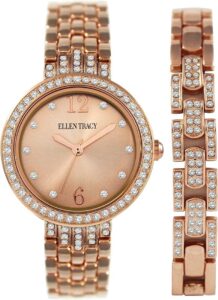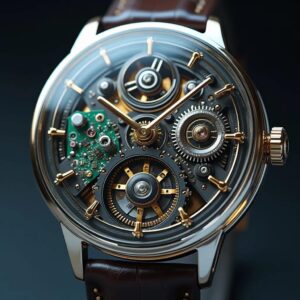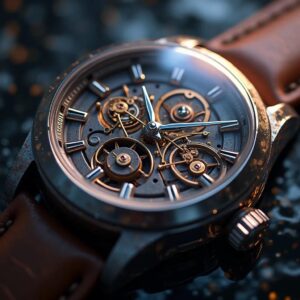Calibre watches, globally recognized for their precision, craftsmanship, and timeless elegance, have long held a place of high esteem among horology enthusiasts and style aficionados. These watches are not just time-telling instruments; they are a testament to the relentless pursuit of perfection in the intricate craft of watchmaking. These timepieces encapsulate the perfect blend of art and science, aesthetic appeal and mechanical ingenuity, tradition and innovation.
The heart of these exceptional timepieces is the calibre, which serves as the watch’s internal mechanism or movement. This complex mechanical device, often unseen but crucial, powers the timekeeping function of the watch. It’s a marvel of engineering and design, embodying the watchmaker’s ingenuity and expertise. The design and functionality of the calibre can differ significantly from one watch to another, underscoring the rich diversity and innovation within the realm of watchmaking.
The allure of calibre watches goes beyond their external beauty. It’s deeply rooted in the complexity and precision of their internal mechanisms. It’s a miniature world within itself, where each tiny part operates in perfect harmony with the others. The mainspring, the energy storage of the watch, the gear train that transmits this energy, and the escapement which releases the energy in carefully controlled amounts — all these work together in a precise orchestration that’s nothing short of miraculous.
This meticulous collaboration of parts culminates in the accurate tracking of time, a testament to the watchmaker’s skills and ingenuity. It’s akin to a symphony of moving parts, a ballet of gears and springs, functioning seamlessly to deliver the precise timekeeping that these watches are renowned for.
When one ventures into the fascinating world of calibre watches, they encounter the two main types of calibre movements: automatic and manual. Automatic calibres harness the power of motion, being powered by the movement of the wearer’s wrist. This ingenious design eliminates the need for frequent manual winding, making for a user-friendly experience.
Conversely, manual calibres demand a more hands-on approach, requiring the wearer to wind the watch manually to store potential energy. This traditional method of winding adds a touch of nostalgia and charm, allowing the wearer to connect more intimately with the timepiece. It’s a ritual that brings the wearer closer to the inner workings of the watch, a nod to the age-old tradition of watchmaking.
Creating a calibre watch is indeed a celebration of the watchmaker’s mastery. This process demands a high level of skill, precision, and patience. Each step in the creation process — from the design of the calibre to the assembly and fine-tuning of the mechanism — involves a beautiful blend of art and science. Each calibre watch, therefore, is a unique piece of art that celebrates mechanical ingenuity and aesthetic excellence, making it a coveted possession for many.
In conclusion, calibre watches are far more than mere timekeeping devices. They are works of art that symbolize the harmonious fusion of form and function. Their intricate mechanisms serve as a testament to the skill, creativity, and dedication of watchmakers. For those who appreciate the beauty of horology or simply admire exquisite design, calibre watches offer an unmatched blend of precision, craftsmanship, and timeless style. Their allure lies not just in their function, but in the story they tell of human ingenuity and the relentless pursuit of perfection.






